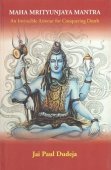Shiva Puja: 1 definition
Introduction:
Shiva Puja means something in Hinduism, Sanskrit. If you want to know the exact meaning, history, etymology or English translation of this term then check out the descriptions on this page. Add your comment or reference to a book if you want to contribute to this summary article.
In Hinduism
General definition (in Hinduism)
Source: WikiPedia: HinduismShiva Puja is the worship of Lord Siva through traditional and ancient rites with the use of mantra, tantra, kriyas, mudras, and abhishekam. General worship of Shiva is quite diverse and can range from worshipping an anthropomorphic murti (Such as the famous Tamil Nataraja statues from the ancient Chola Kingdom), a Lingam (one of Shiva's main symbols), a deified landmark (such as the Ganges or Mount Kailash) or not worshipping a symbol at all (as in the case of the Lingayats).
See also (Relevant definitions)
Relevant text
Search found 1 books and stories containing Shiva Puja; (plurals include: Shiva Pujas). You can also click to the full overview containing English textual excerpts. Below are direct links for the most relevant articles:
Sivaprakasam (Study in Bondage and Liberation) (by N. Veerappan)
Author (Umapati Shivam) and his Works < [Chapter 1 - Introduction]
Related products
